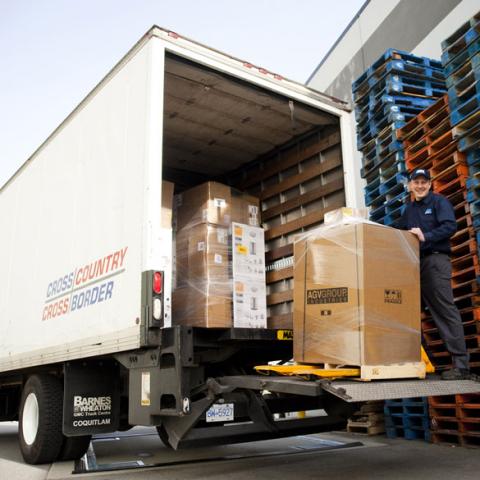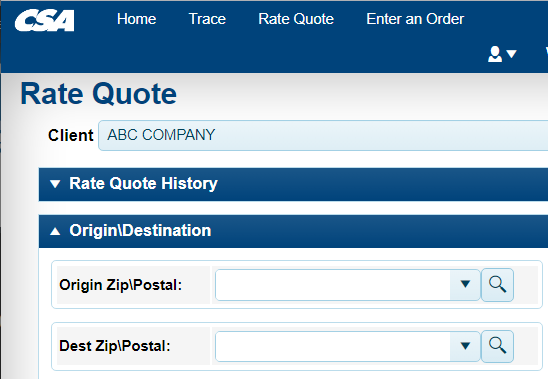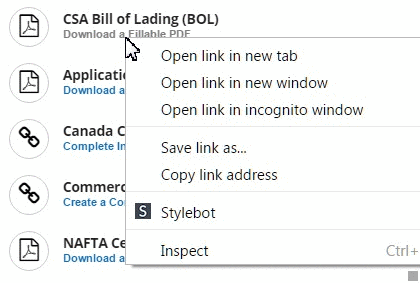How Long Does Freight Shipping Take From the US to Canada?
Considering shipping freight from the US to Canada and wondering how long it might take? The duration varies based on the shipping method and locations involved. Typically, truck transportation takes about 3 to 7 days, but factors such as Canada customs processes can extend this time. Ensuring efficient border crossings when shipping to Canada requires consideration of several key factors that can impact the process.
What is Flat-Rate Freight Shipping?
In flat-rate shipping, also known as pallet rate shipping, customers pay the shipping carrier a flat rate per pallet regardless of the weight, size, or distance the freight travels. Carriers commonly designate an upper weight limit, but otherwise, senders can rely on flat-rate freight shipping to standardize their shipping costs.
Flat-rate freight shipping is a popular option since it makes costs more predictable. Can the same be said for shipping time? Flat-rate freight shipping time tends to be roughly comparable to the shipping times for per-hundred weight rating. The shipping speed from the US to Canada is determined by the specific origin and destination points within each country.
Freight Shipping Time by Transit Mode
So, how long does freight shipping take, on average? Freight shipping time varies due to several factors, starting with the transit mode. For example, sea freight shipping tends to take longer than when shipping by ground, and air freight shipping can cover vast distances faster than other methods. Here’s an overview of what to expect from various transit methods.
Full Truckload (FTL)
Full truckload (FTL) is one of two methods for transporting shipments by road. In FTL shipping, the shipment takes up a truck's full space or weight limit. As a result, there are no other shipments on the same truck, which translates into fewer stops and a more direct shipping route.
This makes FTL Shipping the fastest road-based shipping method, with deliveries from the US to Canada taking place within roughly 3 - 7 days, depending on the origin and destination within each country. For smaller loads, alternative shipping methods are available, providing flexibility to meet a range of needs and budgets.
Less-Than-Truckload (LTL)
Less-than-truckload (LTL) freight shipping is for smaller loads that don’t occupy a full truck trailer. Customers who choose LTL shipping services can expect their shipments to share space with other shipments. Opting for LTL shipping can save on shipping costs for pallet shipments from 1 to 10 units since the costs can usually be less than a full truckload.
LTL shipping, involves more handling between trucks or cargo hubs, yet offers a flexible and cost-effective solution for your shipping needs. Despite the hub and spoke distribution method, which might extend the shipping time slightly, logistics providers employ state-of-the-art planning tools to meticulously optimize shipping routes and load trailers. This helps minimize delays, increases efficiency and ensures significant savings on time and costs, making it an advantageous choice for our customers.
Intermodal Shipping
Intermodal shipping, which combines various transportation methods such as truckload, rail, sea freight, or aircraft, presents an alternative for shipping freight over long distances. Although truckload shipping often plays a role in this system, integrating trains or aircraft can reduce shipping times and costs, thanks to improved fuel efficiency.
Intermodal shipping is different from multimodal shipping. Intermodal transportation usually involves multiple contracts with several carriers, while multimodal shipping occurs under a single contract. Therefore, the price depends on the terms of the carriers involved in the shipping process.
6 Factors That Impact Freight Shipping Times
What kinds of factors affect freight shipping times? Various factors can affect transit times, ranging from distance to shipping method to prevailing weather conditions. Here are some of the most common factors influencing freight shipping time.
1. Distance From Origin to Destination
The most apparent factor affecting shipping speed is the distance between the origin and destination point. Naturally, the farther the distance, the longer it can take. This is especially true for intermodal and LTL freight shipping, which may involve transferring freight between vehicles or freight handling hubs.
That said, even long distances can still be covered quickly by shipping carriers who use expedited shipping methods, so great distances are not necessarily prohibitive to fast shipping speeds.
2. Shipping Method
When considering the transportation of goods between the US and Canada, your shipping method is crucial in determining when shipments will arrive. For those opting for road transit, standard freight typically requires about 3 - 7 days to reach its destination, with FTL shipping offering the quickest turnaround within this category.
In international shipping, people often ask, "How long does ocean freight take?" and "How long does air freight take?"
Sea freight shipping, tailored for longer distances, typically spans 30 to 45 days, influenced by the journey's origin and destination. On the other hand, air freight offers a swifter alternative between the two, with standard air freight reaching its destination in five to 10 days. For urgent deliveries, expedited air shipping can shorten this to just one to three business days, highlighting air transport's capability for swift, time-sensitive deliveries.
3. Weather
Weather also significantly affects the shipping time between the US and Canada. Snow creates hazardous road conditions that slow delivery times. Rain and even fog can do the same if visibility is reduced. The climate along the US-Canada border is surprisingly diverse, often creating road conditions, mud slides or flooding that can delay shipments. If speed is paramount, you may want to consider the weather forecast to anticipate road closings or delays.
4. Construction
Construction work can lead to lane closures, detours, and some roads being completely blocked. Even a small detour can make shipping take much longer, especially if delivery trucks can't use the best alternative routes. However, skilled shipping carriers can navigate these challenges by selecting alternative paths, guaranteeing seamless delivery.
5. Hour of Service Regulations
Hours of service regulations limit the number of hours a truck driver can work a day or week. If the delivery driver reaches this limit, the delivery will be forced to stop, which has an obvious impact on delivery times. Carriers must comply with these regulations. Otherwise, they face fines or penalties and can be putting their drivers at risk from working long hours. Many carriers will use driver teams to keep freight moving which can drastically improve transit times.
6. Estimated Transit Times
LTL shipments usually provide estimated delivery times. While these are just estimates, they mainly cover the journey on the road and might not include the exact arrival time. For instance, an LTL shipment could reach a local hub near its destination and then be delivered to the final address within the next 24 hours or so. This approach allows for flexible and efficient delivery, ensuring your shipment gets to you with great care.
How Long Does Freight Shipping Take?
While shipping times vary by the factors listed above, estimating the standard freight shipping time is still possible.
So, what are the typical delivery times for freight shipping with CSA Transportation? Here are some general shipping durations:
- Domestic US/Canada (Truck/Air): One to 7 days
- Freight International From US to Canada: 3 to 7 days
- Standard Freight (Intermodal): Six to 14 days
As you can see, shipments can reach Canada within a few days.
How to Reduce Freight Shipping Time
When it comes to shipping freight, time is of the essence. If you want to reduce your shipping time without breaking the bank, consider implementing these strategies.
Choose the Right Transportation Partner
Not all trucking companies are the same, so choosing a freight carrier you can trust is critical. CSA Transportation is an experienced carrier and freight broker (for points outside our network) with a fast and reliable shipping track record and a seemly coordination of the Customs Process. Whether you're moving shipments within the US to Canadian customers, we can handle all standard pallet sizes for businesses of any size in Canada.
Optimize Freight Before Shipping
Eliminate any possible cause for shipping delays by packaging your shipments carefully. Odd pallet sizes or improperly labeled items can delay the overall process, especially if your freight has to be transferred between freight hubs.
Leverage the Right Technology
Many logistics providers rely on the latest tools to optimize routes, which can cut down on delays and improve fuel efficiency to reduce costs. Leveraging these tools with CSA Transportation can ensure you achieve the smoothest, most cost-effective shipping solutions.
Determine Whether FTL or LTL is Better for Your Needs
When selecting the best road-based shipping option, it's essential to consider the specific requirements of your shipment. FTL shipping is typically suited for larger companies with the necessary infrastructure and logistics capabilities to receive a full truck carrier at the destination. Opting for FTL becomes cost-effective if the shipper can utilize the entire truck space. This method is especially advantageous for transporting large, fragile items due to the minimal handling.
On the other hand, LTL shipping is the go-to choice for most shippers, including eCommerce entrepreneurs and small businesses, due to its affordability and flexibility. LTL allows for the shipment of smaller freight loads without purchasing an entire truck space, making it a more economical option.
Get Help with Your Freight Shipping Needs with CSA
With extensive experience and 15 full-service regional distribution centers, CSA Transportation can make freight shipping to Canada easy and affordable. Our knowledgeable team can provide personalized service that aligns with your business goals and helps you stick to your timetable and budget.
Contact us today to explore your shipping options and discover how CSA can help you reach your goals.





